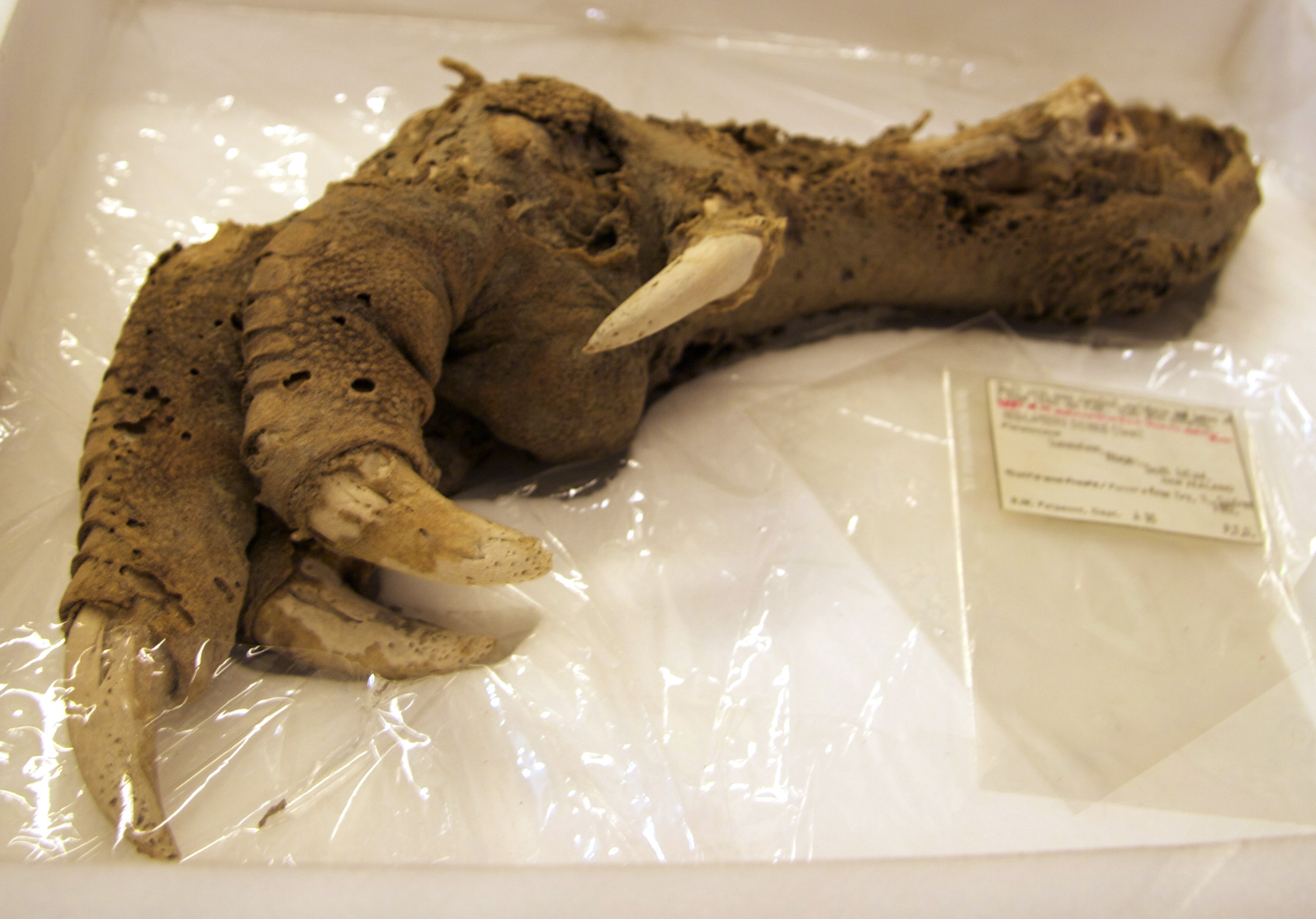MOA -
Flightless giant island-living bird was the New Zealand giant moa a member of the ratite family. There were several species of moa, some taller than the elephant bird at 7 ft (2 metres) to the middle of the back and 13 ft (4 metres) to the head (twice the height of a tall man), although their necks probably projected forwards like a kiwi rather than upwards as usually depicted. They were more lightly built than the elephant bird, but still three times the weight of a large man at up to 200 - 275 kg. The Giant Moa's eggs measured 10 inches (24 cm) long and 7 inches (18 cm wide). Females were 1.5 times the size and almost 3 times the weight of males, leading scientists the revise moa classification and the number of moa species. In the past, the males and females had been erroneously considered different species due to this size difference. The moas occupied similar niches to mammalian herbivores elsewhere.
New Zealand was even more isolated than Madagascar and had no land mammals except bats. The first Polynesians arrived in New Zealand around the 10th century, becoming the Maori. The dominant life-forms were the giant land birds that lived in the fringes of the semi-tropical forests and on the grasslands and which the Maoris called 'Moas'. Encountering the huge birds, the  Maoris made legends of the giant moa, calling it the Poua-Kai and describing it as a huge bird of terrific size and strength which, in a great battle, destroyed half the warriors of a powerful tribe with its terrible rending talons and thrusting bea.
Maoris made legends of the giant moa, calling it the Poua-Kai and describing it as a huge bird of terrific size and strength which, in a great battle, destroyed half the warriors of a powerful tribe with its terrible rending talons and thrusting bea.
 Maoris made legends of the giant moa, calling it the Poua-Kai and describing it as a huge bird of terrific size and strength which, in a great battle, destroyed half the warriors of a powerful tribe with its terrible rending talons and thrusting bea.
Maoris made legends of the giant moa, calling it the Poua-Kai and describing it as a huge bird of terrific size and strength which, in a great battle, destroyed half the warriors of a powerful tribe with its terrible rending talons and thrusting bea.
Moas were huge ratite 'running birds' like the Elephant Bird, but they inhabited the grasslands and forest-fringe in extraordinary numbers and variety. Scientists later gave them the family name Dinornithidae, 'terrible birds'. The aggressive Polynesian invaders became a Moa-hunting culture and for the moa, which had had no predators in 100 million years, the effect was devastating.
Does anyone know why the Moa were not able to survive in this land so well suited for their existance?
Please offer your information and comment.
Aloha, Palolo Bob



No comments:
Post a Comment